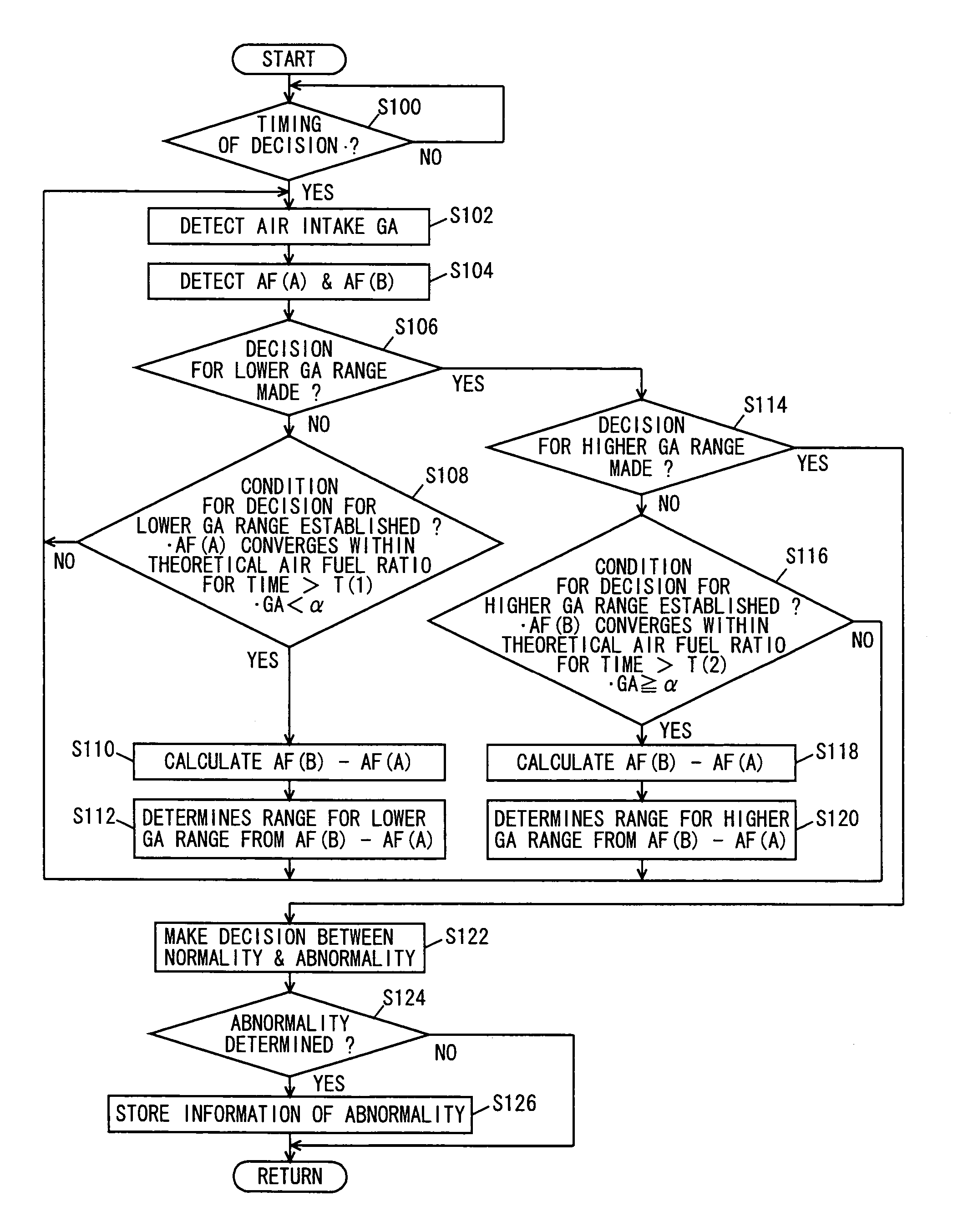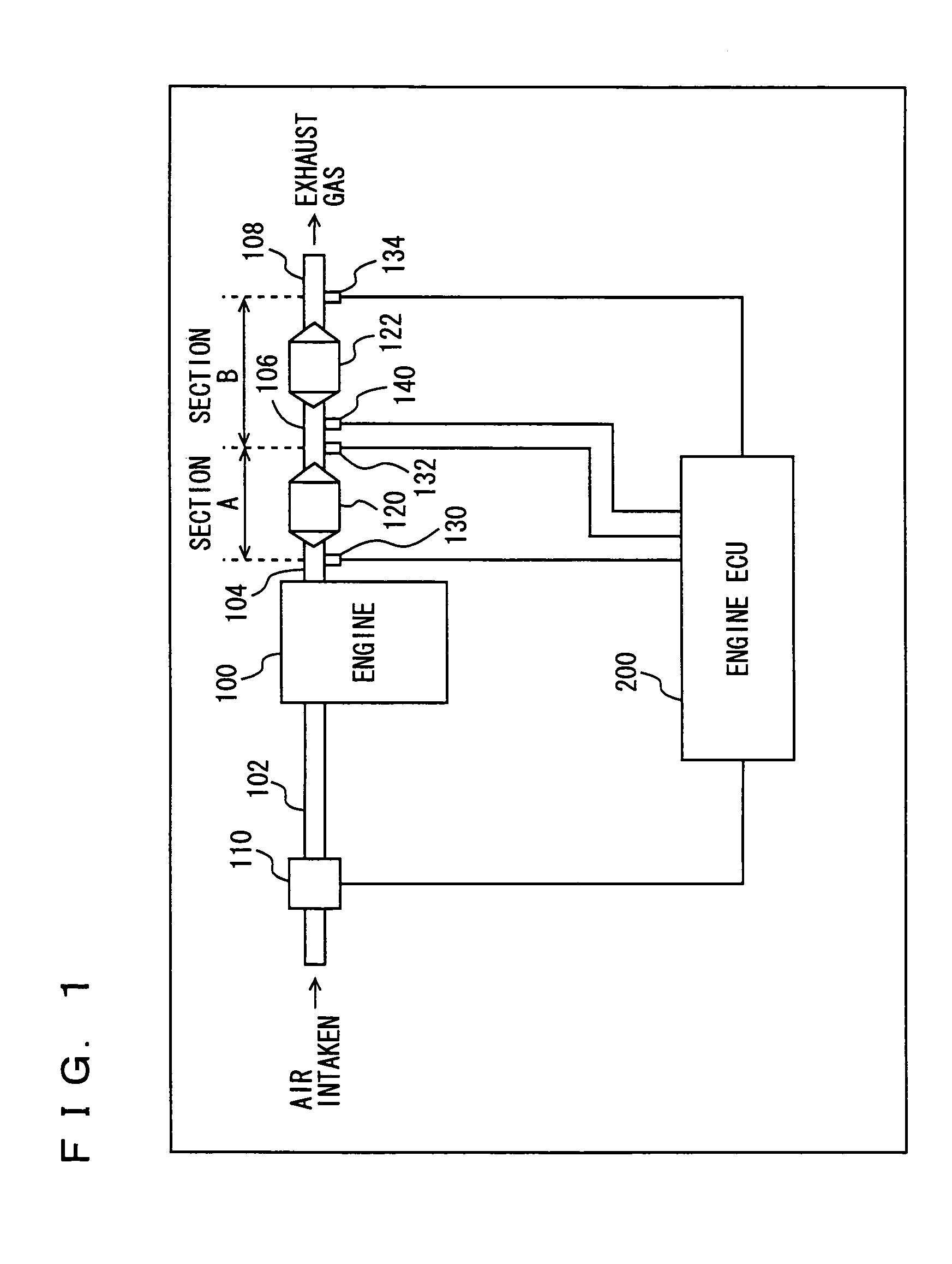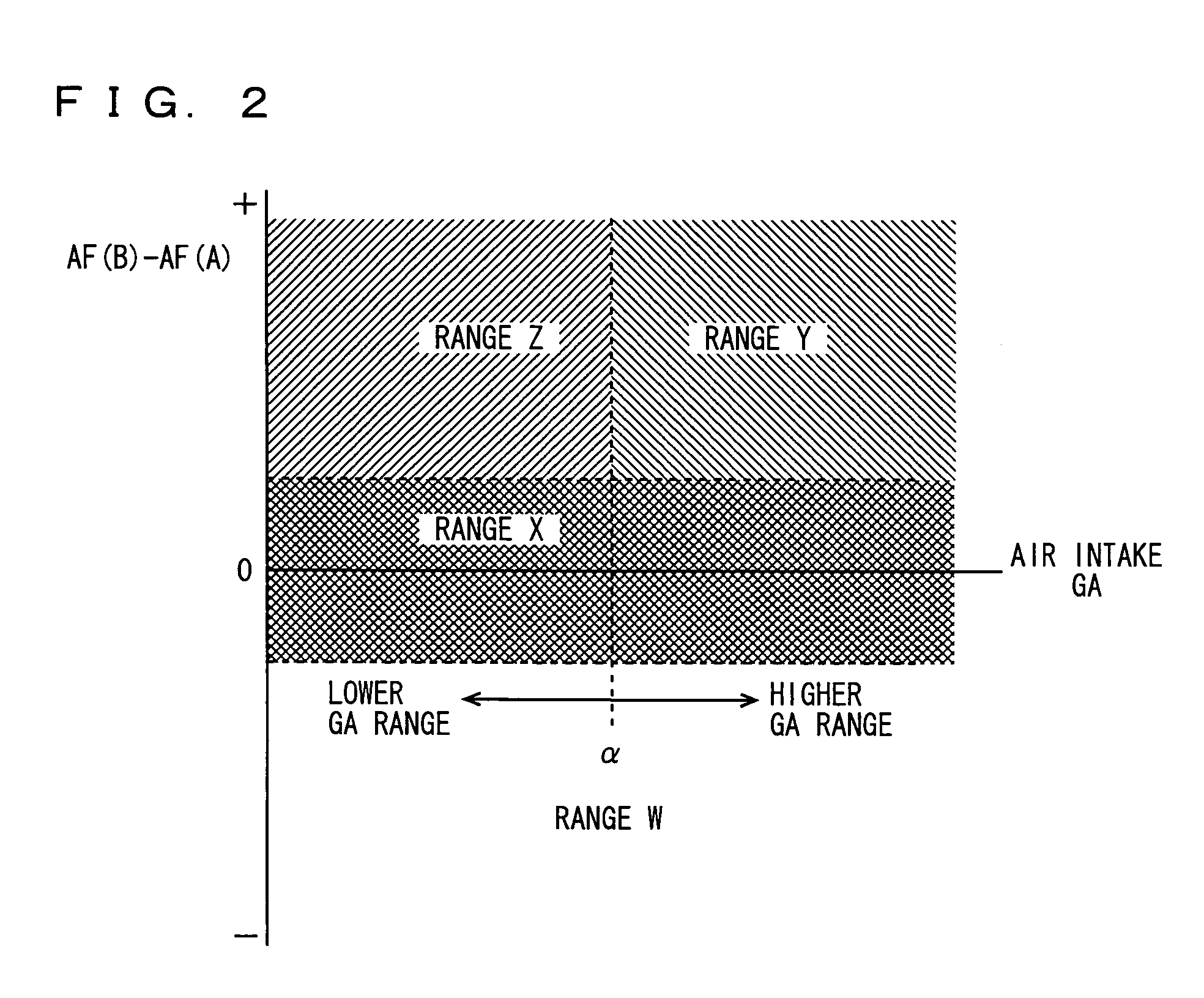Apparatus detecting abnormality of exhaust system of internal combustion engine
an internal combustion engine and abnormality detection technology, applied in the direction of exhaust treatment electric control, electrical control, instruments, etc., can solve the problems of poor detection precision, reduced decision-making precision, and unsatisfactory control of the internal combustion engine's each system, and achieve high precision
- Summary
- Abstract
- Description
- Claims
- Application Information
AI Technical Summary
Benefits of technology
Problems solved by technology
Method used
Image
Examples
first embodiment
[0045
[0046]The present invention in a first embodiment provides an abnormality detection system, as will be described hereinafter.
[0047]FIG. 1 is a general, control block diagram of the abnormality detection system. As shown in FIG. 1, the abnormality detection system detects abnormality occurring in an internal combustion engine 110 at exhaust pipes 104, 106, 108. The abnormality detection system includes: engine 100; an air intake pipe 102 sending air into engine 100; exhaust pipe 104, 106, 108 exhausting gas from engine 100; an airflowmeter 110 arranged at air intake pipe 102, a first catalyst 120 arranged between exhaust pipes 104 and 106; a second catalyst 122 arranged between exhaust gas 106 and exhaust pipe 108; an air fuel ratio sensor 130 arranged upstream of the first catalyst 120 (or closer to engine 100); a second air fuel ratio sensor 132 arranged between the first and second catalysts 120 and 122; a third air fuel ratio sensor 134 arranged downstream of the second cata...
second embodiment
[0083
[0084]The present invention in a second embodiment provides an abnormality detection system as will be described hereinafter. Note that the present embodiment's abnormality detection system has the same hardware configuration as that of the abnormality detection system described in the first embodiment (as shown in FIG. 1).
[0085]Reference will now be made to FIG. 7 to describe a table stored in an engine ECU 200 of the abnormality detection system of the present embodiment. As shown in FIG. 7, the present embodiment provides engine ECU 200 detecting normality / abnormality of the first, second and third air fuel ratio sensors 130, 132, 134 arranged at an exhaust pipe. Accordingly a decision is made on a relationship in magnitude between an absolute value of a difference between air fuel ratios detected by the three air fuel ratio sensors and predetermined threshold values β, γ, σ.
[0086]As indicated in FIG. 7, the first, second and third air fuel ratio sensors 130, 132 and 134 det...
PUM
 Login to View More
Login to View More Abstract
Description
Claims
Application Information
 Login to View More
Login to View More - R&D
- Intellectual Property
- Life Sciences
- Materials
- Tech Scout
- Unparalleled Data Quality
- Higher Quality Content
- 60% Fewer Hallucinations
Browse by: Latest US Patents, China's latest patents, Technical Efficacy Thesaurus, Application Domain, Technology Topic, Popular Technical Reports.
© 2025 PatSnap. All rights reserved.Legal|Privacy policy|Modern Slavery Act Transparency Statement|Sitemap|About US| Contact US: help@patsnap.com



